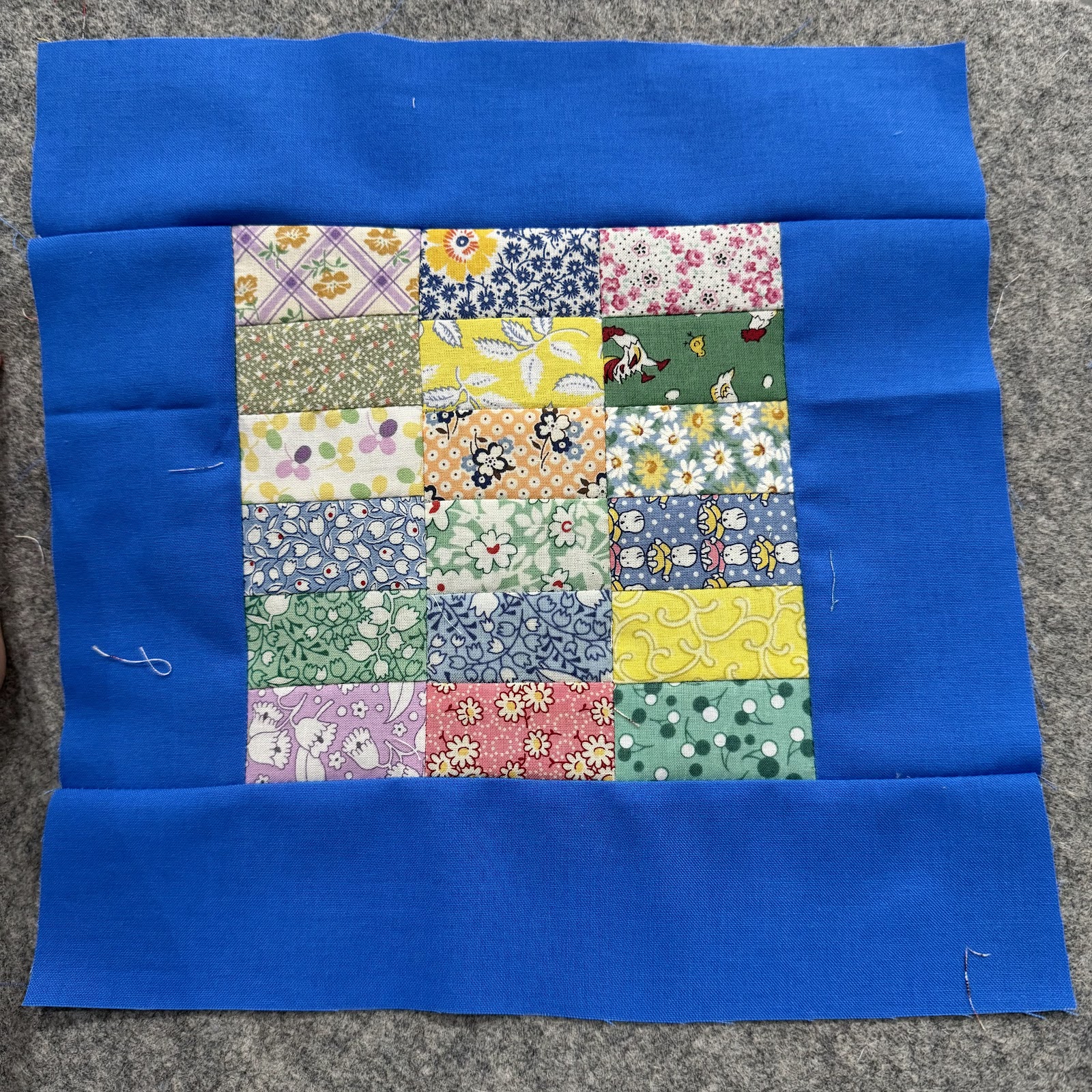Chinese coins, 1930's repros framed blocks
Top completed 2024
70 by 50 inches
35 blocks
Blocks finish 10 inches
Scraps are 1930's/40's repros, plus a few vintage scraps of my mother, all from my bins of cut down scraps.
(One of the bins I sort scraps into is 30's repros rectangles 1 1/2 by 2 1/2 inches. So no cutting needed for this quilt other than the blue frames.)
The blue is Kona Harbor (love the 1940's feel this color gives to the scraps)
 |
| Block A |
 |
| Block B |
Block A (18 blocks)
18 scraps 1 1/2 by 2 1/2 inches (((324 for quilt)))
Frame: two rectangles 2 1/2 by 6 1/2 inches, two rectangles 2 1/2 by 10 1/2 inches (((36 each for quilt)))
Block B (17 blocks)
50 scraps 1 1/2 by 2 1/2 inches (((850 for quilt)))
SO,
1174 scrap rectangles total for this quilt.
Process:
I sewed into 587 twos
I set aside 139 of the twos.
The remainder, 448, were sewed into 224 fours.
(This is not how I actually work--I sew twos until I am tired of it, then fours, etc. I count up when they are at the fours stage. I always think I am way over; I am always under and need to make more.)Block A
I took 54 of the fours and added a two to each making 54 sixes.
These units were pressed with all seams going one direction.
I sewed these into 18 blocks of three units, flipping the center unit so all seams nest.
I added the frames onto these.
The short sides frames were pressed to the frames.
The top and bottom frames were pressed north (this helps with nesting later).




Block B
The remaining 170 fours were sewn into 85 eights.
A two was sewn onto each of these to make tens.
These units were pressed with all seams going in one direction.
5 units were sewn into blocks, flipping every other unit so all seams nest.


Joining blocks
Orient the Block B so the outer seams are pressed south and it will nest into Block A with its sashing seams pressed north.
Sew in rows and press rows north.
My design, use at your pleasure.
I am trying to make smaller quilts so my initial sketch was for 63 blocks coming to 70 by 90. I scaled back to 34 blocks coming to 50 by 70.
It is hard for me to work smaller.
 |
Backing is mainly the wonderful Jane Sassaman's Spring Fever Mini Queen of May for Free Spirit (Jane and my children attended the same school back in the 1990s).
And to get to the right width,
a length of Color Pop Studies for Blank Quilting Corp. |
My beloved Bernina 830 take-up lever broke off. I gently packed it for repairs and brought out this lovely Bernina 930 I had in reserve. I wisely purchased it a few years ago during the lock down from a man moving out of town. $350. At the time I tested it to make sure it worked, bought what was missing (case, flatbed, accessories box, manual) and it went into the closet.
I needed to get to know the machine so I chose this project from my sketchbook as I knew there would be lots of repetitive sewing.
I already had the scraps cut to size, so this was a pleasant sew.
And I fell in love with this machine.


































